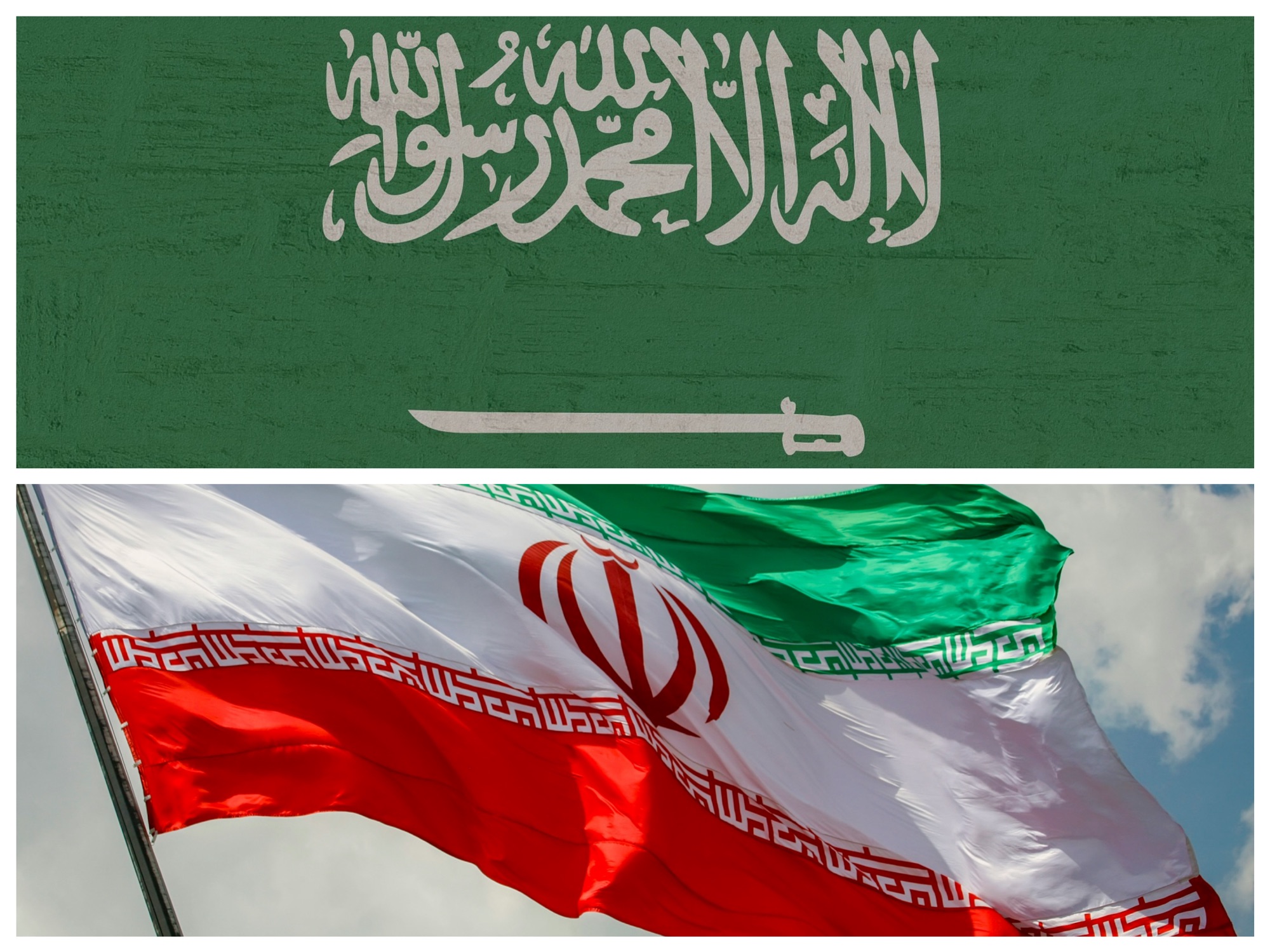The rivalry between Saudi Arabia and Iran is one of the most defining and destabilizing factors in the Middle East. Though often framed as a sectarian conflict between Sunni and Shia Islam, the animosity between these two regional powers goes beyond religious differences. It involves geopolitical competition, ideological divergence, and historical grievances that have fueled proxy wars, diplomatic confrontations, and deep-seated mistrust for decades. This article provides a detailed analysis of the key factors driving the hostility between Saudi Arabia and Iran.
The Sectarian Divide: Sunni vs. Shia Islam
Origins of the Sunni-Shia Split
At the heart of the rivalry between Saudi Arabia and Iran lies the ancient Sunni-Shia divide, which dates back to the 7th century and the early days of Islam. The split occurred over a disagreement about who should succeed the Prophet Muhammad as the leader of the Muslim community. Sunni Muslims, the majority in the Muslim world and the dominant sect in Saudi Arabia, believe that the community should select the caliph (leader), while Shia Muslims, the dominant sect in Iran, believe leadership should remain within the Prophet’s family, specifically with his cousin and son-in-law, Ali.
This historical schism has evolved into distinct religious, cultural, and political identities, with each sect developing its own religious practices, legal traditions, and clerical hierarchies. Over time, these differences have been politicized and weaponized, particularly in the modern rivalry between Saudi Arabia and Iran.
The Religious Ideologies of Saudi Arabia and Iran
Saudi Arabia considers itself the leader of the Sunni Muslim world and the custodian of Islam’s two holiest sites in Mecca and Medina. The kingdom adheres to Wahhabism, an ultra-conservative interpretation of Sunni Islam that has shaped its religious, social, and political systems. Saudi leaders see themselves as defenders of Sunni orthodoxy and have historically viewed Shia Islam with suspicion and hostility.
Iran, on the other hand, is the world’s largest Shia-majority country and regards itself as the protector of Shia Muslims globally. Following the 1979 Islamic Revolution, Iran established itself as an Islamic Republic with a theocratic government led by Shia clerics. The revolution’s success inspired Shia movements across the region, and Iran’s leaders have sought to export their revolutionary ideology, which directly challenges the legitimacy of Saudi Arabia’s monarchical and Sunni-based rule.
Geopolitical Rivalry: Competing for Regional Dominance
The Cold War in the Middle East
The rivalry between Saudi Arabia and Iran is often described as a “Cold War” within the Middle East, with both nations vying for influence across the region. This competition plays out through proxy wars, alliances, and support for opposing political factions in various countries. Both nations seek to expand their spheres of influence and undermine each other’s power.
The Arab Spring and the Intensification of the Conflict
The Arab Spring uprisings of 2011 marked a turning point in the Saudi-Iranian rivalry. As protests and revolutions swept across the Arab world, both Saudi Arabia and Iran sought to shape the outcomes to align with their strategic interests. In Bahrain, a Shia-majority nation ruled by a Sunni monarchy, Saudi Arabia intervened militarily to suppress an uprising that it feared could shift the country into Iran’s orbit. In Syria, Iran backed President Bashar al-Assad, a key ally, while Saudi Arabia supported various Sunni rebel groups seeking to overthrow his regime.
The Arab Spring exacerbated the existing sectarian and geopolitical divides, turning countries like Yemen, Iraq, and Lebanon into battlegrounds for Saudi-Iranian competition. These proxy conflicts have led to devastating humanitarian crises, prolonged instability, and deepened the sectarian polarization across the region.
Historical Grievances and Diplomatic Tensions
The 1979 Iranian Revolution and the Shift in the Balance of Power
The 1979 Islamic Revolution in Iran fundamentally altered the balance of power in the Middle East. The overthrow of the pro-Western Shah and the establishment of an Islamic Republic marked the rise of a new regional power with an explicitly anti-Western, anti-monarchical, and Shia-driven ideology. Saudi Arabia, a close ally of the United States and a staunchly conservative Sunni monarchy, viewed the revolution as a direct threat to its legitimacy and security.
The revolution also introduced a new dynamic in the rivalry: the ideological competition between the Saudi model of Sunni monarchism and the Iranian model of Shia theocracy. Iran’s efforts to export its revolution—by supporting Shia movements and militant groups in countries like Lebanon, Iraq, and Bahrain—intensified Saudi fears of encirclement and destabilization.
Diplomatic Flashpoints: From the 1980s to the Present
Over the decades, diplomatic relations between Saudi Arabia and Iran have been marked by cycles of hostility and limited rapprochement. Key flashpoints include:
- The Iran-Iraq War (1980-1988): Saudi Arabia supported Iraq financially and politically in its war against Iran, seeing Saddam Hussein’s regime as a bulwark against Iranian expansion.
- The 1987 Hajj Incident: During the annual pilgrimage in Mecca, clashes between Iranian pilgrims and Saudi security forces led to the deaths of over 400 people, most of them Iranian. The incident sparked a diplomatic crisis and further deepened the animosity between the two nations.
- The Execution of Sheikh Nimr al-Nimr (2016): The execution of the prominent Shia cleric Sheikh Nimr al-Nimr by Saudi Arabia triggered widespread outrage in Iran. In response, protesters in Tehran attacked the Saudi embassy, leading Saudi Arabia to sever diplomatic ties with Iran. This marked a significant escalation in their rivalry.
The Battle for Influence: Proxy Wars and Regional Alliances
The Yemen Conflict: A Humanitarian Catastrophe
The war in Yemen is one of the most prominent and tragic examples of the Saudi-Iranian rivalry. Since 2015, Saudi Arabia has led a coalition in support of the Yemeni government against the Houthi rebels, who are supported by Iran. While the Houthis are a Zaydi Shia group with distinct religious practices from Iran’s Twelver Shia majority, Tehran has provided them with financial, logistical, and military support. For Saudi Arabia, the Houthi control of Yemen represents an unacceptable expansion of Iranian influence on its southern border.
The Yemen conflict has resulted in a massive humanitarian crisis, with thousands of civilians killed, millions displaced, and widespread famine and disease. The war has also become a proxy battlefield for Saudi Arabia and Iran, with neither side willing to back down, prolonging the suffering of the Yemeni people.
The Syrian Civil War: A Test of Regional Strength
In Syria, Saudi Arabia and Iran have backed opposing sides in the country’s brutal civil war. Iran has been a key supporter of President Bashar al-Assad’s regime, providing military aid, funding, and the deployment of fighters from Hezbollah and other Shia militias. Saudi Arabia, along with other Gulf states, supported various Sunni rebel groups, seeking to topple Assad and weaken Iran’s influence in the region. The Syrian conflict has not only deepened the Saudi-Iranian rivalry but also reshaped the geopolitical landscape of the Middle East.
Iraq, Lebanon, and Beyond: Competing for Control
The competition between Saudi Arabia and Iran extends beyond Yemen and Syria. In Iraq, the power vacuum left by the U.S. invasion and subsequent withdrawal allowed Iran to expand its influence through Shia militias and political parties. Saudi Arabia, concerned about Iran’s growing dominance in Iraq, has sought to rebuild ties with Sunni factions and counterbalance Iranian influence.
In Lebanon, Iran’s support for Hezbollah, a powerful Shia militant group and political party, has given it significant leverage. Saudi Arabia has backed Sunni political factions in Lebanon in an effort to counterbalance Hezbollah’s power, but the country remains a microcosm of the broader Saudi-Iranian rivalry.
Ideology and Propaganda: Shaping Public Perception
Media and Influence Campaigns
Both Saudi Arabia and Iran use state media, religious institutions, and social networks to shape public perception and promote their narratives. In Saudi Arabia, state-sponsored clerics and media outlets emphasize the dangers of Shia Islam and portray Iran as an existential threat to the Sunni world. In Iran, state media demonizes the Saudi monarchy, framing it as a corrupt puppet of Western powers and a betrayer of Islamic values.
This propaganda war extends to religious discourse, where each side seeks to delegitimize the other’s interpretation of Islam. Saudi Arabia’s promotion of Wahhabism and Iran’s export of its revolutionary Shia ideology have contributed to deepening sectarian divisions across the Middle East.
The Role of Western Powers
Western powers, particularly the United States, have also played a significant role in the Saudi-Iranian rivalry. The U.S. has long been a close ally of Saudi Arabia, providing military support, arms sales, and diplomatic backing. Iran, on the other hand, has been at odds with the U.S. since the 1979 revolution, facing decades of sanctions and diplomatic isolation. The U.S. withdrawal from the Iran nuclear deal and the re-imposition of sanctions under the Trump administration further exacerbated tensions between Saudi Arabia and Iran, as both countries sought to navigate shifting geopolitical dynamics.
The Future of the Rivalry: Is Peace Possible?
Recent Diplomatic Engagements
In recent years, there have been some attempts at diplomatic engagement between Saudi Arabia and Iran. Talks facilitated by Iraq in 2021 and 2022 aimed to reduce tensions and explore avenues for coexistence, focusing on issues like the war in Yemen and regional stability. While these talks show a potential for de-escalation, deep-seated mistrust and competing strategic interests make a full reconciliation unlikely in the near term.
The Prospects for Peace and Stability
The rivalry between Saudi Arabia and Iran is likely to continue shaping the Middle East for the foreseeable future. Both countries view the struggle for regional dominance as an existential battle, and neither is likely to relinquish its ambitions easily. However, reducing the intensity of their competition, avoiding direct confrontation, and finding mutually beneficial arrangements in regional conflicts could help bring some stability to the Middle East.
Conclusion
The animosity between Saudi Arabia and Iran is rooted in a complex mix of sectarian differences, geopolitical rivalry, historical grievances, and ideological competition. While religion plays a role in their conflict, the rivalry is primarily driven by power struggles, regional ambitions, and conflicting visions for the future of the Middle East. As long as these factors remain unresolved, the Saudi-Iranian rivalry will continue to fuel instability, proxy wars, and sectarian tensions across the region. Understanding the deeper dynamics behind this conflict is crucial for any efforts to achieve peace and stability in the Middle East.




